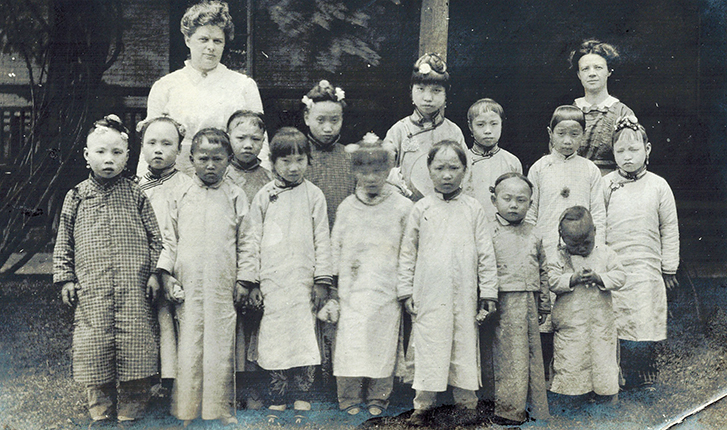Ch 2: The West China Mission

In this chapter, we zoom out from individual missionaries’ experiences in the mission community to situate them in the broader organizational picture of West China mission work. Missions in West China were booming for the first few decades of the 20th century. The plethora of churches and religious bodies sending missionaries to West China resolved itself into a quasi-colonial division of powers, agreed to by the main Protestant missionary societies, in which particular denominations were given responsibility and authority for particular geographic zones and areas of substantive work. Exact numbers of missionaries are hard to come by, complicated by uneven reporting of missionary wives, and interdenominational squabbles over who “counted” as a true Christian missionary.
In their official capacities, missionaries across West China were engaged in three branches of service: evangelism, medicine and education. Evangelism has been the focus of many studies dealing with 19th century missionary penetration into China’s coastal regions. Medical services, especially surgical and dental procedures, were the “shock and awe” gateway through which (the missionaries hoped) the people of Sichuan would be drawn to the missions (and which would prompt big donations from congregations in sending countries, impressed by stories of “healing miracles” and eager to see new hospitals and clinics). Medical mission work has also been the subject of much contemporary scholarship on China missions. Because educational work was the less-showy long-haul work, it has rarely even been identified as a separate field of study.
The goal of mission educational work was to create a system of schools which would produce a literate Chinese middle class (ideally Christian). Schools were intended to transmit not only the knowledge of new technologies and scientific advances (modulated by the gender, age, and geographic location of the students), but also the liberal democratic ideals of citizenship, as imagined by the missionaries. In addition to formal curricula, the work of education missionaries (and their wives) included extracurricular activities, sports, and charitable work with mothers, children and adults with disabilities – all aimed at cultivating a particular sort of sensibility in which ideals of altruism, fair play, and responsible leadership figured large. Through these activities it was also hoped that Chinese would learn organizational skills that could be applied to all manner of institutional leadership that both missionaries and Chinese progressives thought were necessary to run a modern nation-state.